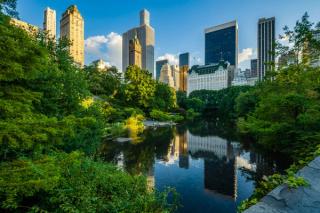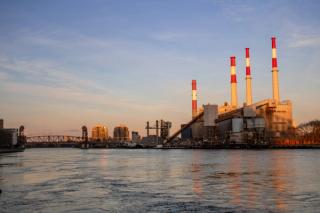
Understanding biodiversity net gain, hydrology, ecology, and landscape
- Post Date
- 20 December 2024
- Read Time
- 5 minutes

The implementation of biodiversity net gain (BNG) represents a transformative shift in how developments in England integrate environmental responsibility. Mandated from 12 February 2024 for major developments and small sites under Schedule 7A of the Town and Country Planning Act 1990 (as inserted by Schedule 14 of the Environment Act 2021), BNG requires developments to leave biodiversity in a measurably better state than before. This approach not only elevates the ecological outcomes of development but also aligns with broader environmental sustainability goals.
This article discusses the interconnected nature of BNG, hydrology, ecology, and landscape, and how these components are essential to consider in the early stages of development.
Understanding biodiversity net gain (BNG)
BNG introduces a minimum requirement of 10% biodiversity uplift, though local planning authorities may impose higher targets. Biodiversity is quantified using standardised units, including habitat, hedgerow, and watercourse units. While habitat units apply universally, hedgerow and watercourse units are only relevant if these features actually exist on-site. Importantly, improvements must align with the same unit type; for instance, habitat upgrades cannot substitute for enhancements to watercourses, ensuring focused and ecologically relevant outcomes in the planning stages of development.
Achieving BNG hinges on a structured approach that prioritises avoiding harm to biodiversity, followed by creating on-site enhancements within the development boundary. Where on-site improvements are insufficient, developers can pursue off-site measures, either on their own land or through purchasing biodiversity credits. As a last resort, statutory biodiversity credits can be bought from the government. On-site measures are generally preferred due to their ecological relevance and cost-effectiveness, as off-site credits often have diminished local impact and may not provide demonstratable biodiversity gains to stakeholders involved in the engagement process.
The role of watercourses
Watercourses play a significant role in BNG, encompassing rivers, streams, canals, ditches, and culverts. Priority river habitats, defined as those closest to natural conditions, are particularly valuable. Watercourse assessments extend beyond the immediate development site to include a 10-metre-wide riparian zone from the top of the bank. This means even watercourses near but outside the development boundary can influence biodiversity calculations. Baseline assessments, such as the River Condition Assessment, are required for rivers, streams, and canals, focusing on indicators such as natural bank profiles, vegetation abundance, and the absence of invasive species.
Enhancing watercourses often involves reintroducing varied morphologies, reconnecting floodplains, or planting native vegetation, which collectively support both ecological and hydrological benefits. Additionally, these efforts can improve flood storage and stabilise banks, provided flood risk assessments confirm their feasibility.
Sustainable urban drainage systems (SuDS)
Sustainable urban drainage systems (SuDS) have become a standard feature in modern developments, providing a dual-purpose solution for managing surface water and enhancing biodiversity. Properly designed SuDS, such as swales, detention basins, and wetlands, can significantly boost a site’s biodiversity metric while fulfilling drainage needs. Early collaboration with ecologists is essential to identify opportunities for integrating SuDS with local habitats and wider landscape plans. For example, careful consideration of local species can ensure that designs connect existing habitats and accommodate wildlife needs, such as minimising maintenance during breeding seasons.
The use of SuDS also adds to the aesthetic quality of a development, promotes health and wellbeing, and creates better places to live, work, and play. When SuDS are done well and designed at the beginning of the development process, they provide a development with blue-green infrastructure, outdoor spaces, trees, water courses, and ponds. SuDS create an appealing environment for people and shouldn’t be considered as a ‘nice to have’, but essential to preserving the environment and helping to create a sense of place for residents.
Landscape design and integration
Landscape design also plays a crucial role in integrating biodiversity and hydrology. Early planning allows for the natural hydrology of a site to inform the creation of blue-green infrastructure, which supports diverse habitats while addressing drainage requirements. This approach not only enhances ecological connectivity but also aligns with multifunctional land-use principles, maximising the benefits of open spaces.
Closing thoughts
BNG presents a powerful opportunity to rethink development through the lenses of ecology and hydrology. By embedding thoughtful design, collaborative planning, and long-term management, developers can meet regulatory requirements while contributing to a more biodiverse and resilient future. The challenge now is to seize this opportunity and ensure that BNG becomes a cornerstone of sustainable development practices for all future development.

